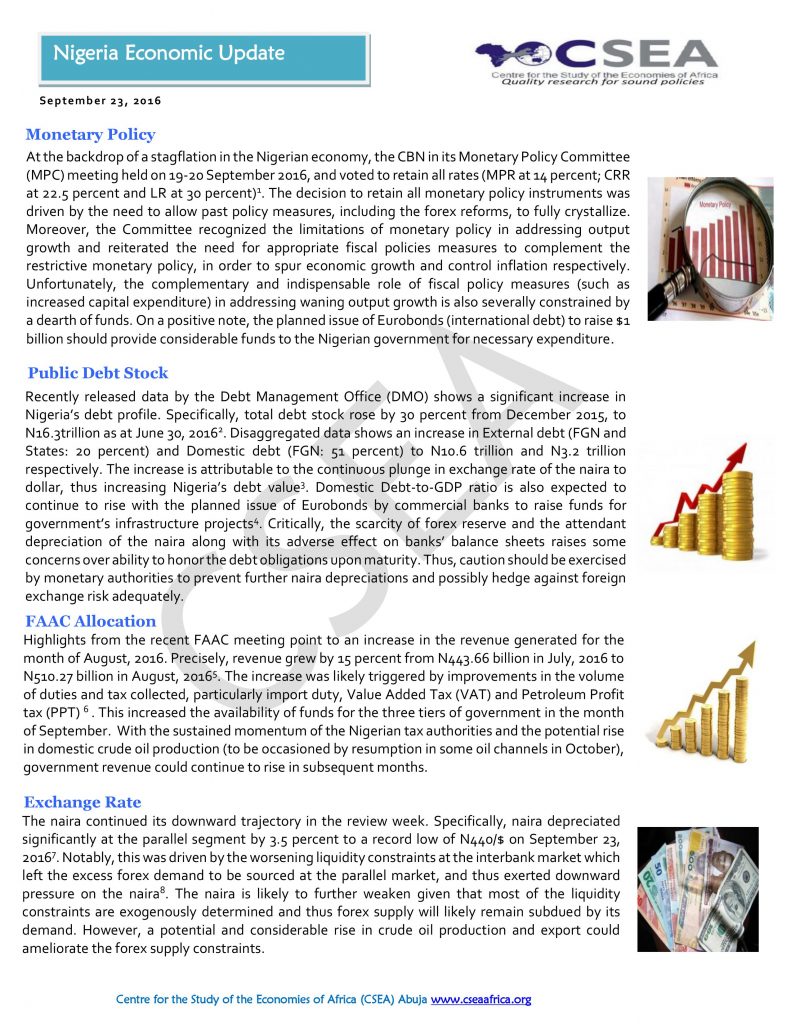Macroeconomic Report & Economic Updates

October 4, 2016
Nigeria Economic Update (Issue 41)
The
naira continued its downward trajectory in the review week. Specifically, naira
depreciated significantly at the parallel segment by 3.5 percent to a record
low of N440/$ on September 23, 2016. Notably, this was driven by
the worsening liquidity constraints at the interbank market which left the
excess forex demand to be sourced at the parallel market, and thus exerted
downward pressure on the naira. The naira is likely to further
weaken given that most of the liquidity constraints are exogenously determined
and thus forex supply will likely remain subdued by its demand.
Related
Economic Growth And Job Creation (2012 Q3 To 2013 Q4)
This report examines the pattern of
economic growth and employment generation in Nigeria based on quarterly data.
It also analyzes the quality of job creation, dynamics of output and employment
and establishes the link or absence thereof between economic growth and labor
demand.
The Chinese Model Of Infrastructure Development In Africa
Infrastructural
development is a key step in providing a competitive business environment for
African economies. It provides the backbone for poverty reduction strategies
and programmes designed to improve the livelihood of the poor. Africa is in
dire need of infrastructural development. The absence of quality infrastructure
in the continent holds back per capita economic growth by 2 percentage points
each year and depresses firm productivity by as much as 40 percent (Escribano
et al., 2008 and Kelly, 2012). Estimates suggest that around USD 90 billion is
required to close Africas infrastructure gap annually until 2020 (AICD, 2010).
